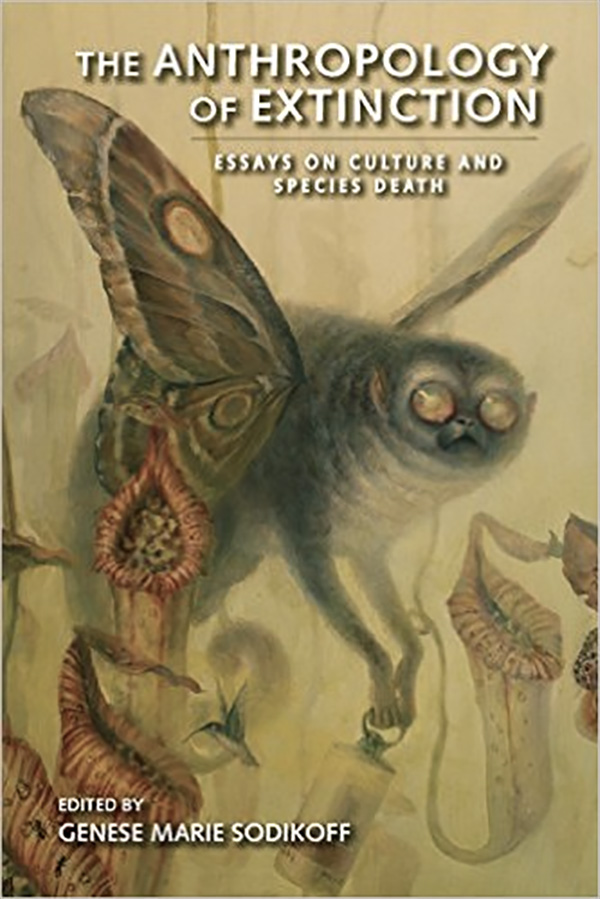The Last Word
At the beginning of each semester, Lise Dobrin asks the undergraduates who take her Languages of the World class at the University of Virginia if they’ve ever heard or read about endangered languages. Fifteen years ago, only a few had; nowadays everyone raises a hand.

Why the shift? Because the popular media has done so many stories about the extinction of thousands of minority languages. In mid-December, Google News listed 3,870 articles containing the phrase “endangered languages” — and only about 130 with “emerging languages” or “hybrid languages,” a term that refers to emerging tongues. Clearly extinction and death are the more popular topic.
What does this popularity say about us? (By “us,” I mean people in industrialized countries who consume media in languages that aren’t endangered.) We love stories about dying languages and their last speakers for the same reasons that we love stories about the last buffalo, the last passenger pigeon, or the last cowboy: They confirm an evolutionary story we tell ourselves about what’s fit for the modern world. Sure, we might seem to be mourning the passing of these worlds gone by, but the eulogies implicitly tell a social Darwinist story in which minority languages succumb to modernity because they’re unsuited for the times.

The 2011 book “The Anthropology of Extinction” notes that Europeans of the 19th century, “elegized what they perceived to be living relics of their evolutionary past.”
The literature of “Last Things,” in which the modern civilization and its imperatives are unquestioned, is not a recent phenomenon. As the anthropologist Genese Marie Sodikoff writes in the foreword to the 2011 book “The Anthropology of Extinction,” a “discourse of nostalgia” reigned among Europeans of the 19th century, who “waxed nostalgic over the ‘primitive races’ killed by firearms and foreign germs” and “elegized what they perceived to be living relics of their evolutionary past and regretted the violence done to cultural diversity.” We fetishize vanishing species or cultural forms, even as we’re complicit in their demise. The anthropologist Renato Rosaldo called this an “imperialist nostalgia:” “A person kills somebody, then mourns the victim.”
When I entered graduate school for linguistics in the early 1990s, linguists were already starting to raise the alarm about language extinction. In “The World’s Languages in Crisis,” an academic piece for the discipline’s flagship journal, Language, Michael Krauss wrote, “The Eyak language of Alaska now has two aged speakers; Mandan has six, Osage five, Abenaki-Penobscot 20, and Iowa has five fluent speakers.” Krauss, who has since retired from the University of Alaska, Fairbanks, urgently addressed his fellow linguists: “We must do some serious rethinking of our priorities, lest linguistics go down in history as the only science that presided obliviously over the disappearance of 90 percent of the very field to which it is dedicated.”
A decade later, I had finished my degrees and was writing about language and linguistics for magazines and newspapers, but I never did a straight-up story about endangered languages because I couldn’t bear to repeat the usual tropes: the magical indigene, a wrinkled elder sitting by a fire, the last living repository of cultural knowledge encoded in the language that was about to vanish forever; the heroic linguist who made sacrifices to capture the last shreds of the language with dictionaries, grammars, video, and audio; and the divided youth from the community who knows he or she should speak the language but still doesn’t.
You would be hard-pressed to find a piece of journalism about endangered languages that doesn’t invoke these tropes. In a 2011 paper in the journal Public Understanding of Science, the media studies scholar Nancy Rivenburgh at the University of Washington looked at 595 news articles about endangered languages to analyze how the issue had been presented or framed. The articles appeared between 1971 and 2006 in outlets in 15 western industrialized countries (and all were written in English). Nearly 40 percent began with a personal story about last speakers, and only half of the articles viewed language extinction sympathetically.
Throughout the articles, three frames predominated, Rivenburgh found. One placed the roots of the problem with speakers of the language. If they didn’t want to speak their language anymore, that was depicted as their choice. A second frame put language endangerment in the context of intractable global forces, such as modernization or pressure from major languages like English, Spanish, or Chinese. This suggested that extinction was inevitable. And the third frame concerned the role of historical forces, like governments refusing to provide education in mother tongues or even punishing people for speaking them.
To be sure, these framings may have changed; media tropes are durable but they can also shift. In recent years, more stories have focused on technologies — apps, websites, fonts, Unicode — that aid revitalization and increase a language’s online presence. Still, it’s clear that the “news” of language extinction has long since ceased to be truly new. This coverage can’t be about calling people to any sort of action. In fact, Rivenburgh concluded from her study that media coverage “treat[s] the radical disappearance of languages in a way that would promote public complacency.”
Al-Sayyid Bedouin Sign Language, or ABSL, developed organically among recent generations of villagers in Israel’s Negev desert where a recessive gene has caused the deaf population to grow.
In August, New York magazine ran a story called “The Race to Study a Dying Sign Language Before It Disappears.” This one was about the al-Sayyid Bedouin Sign Language, or ABSL, which spontaneously arose several generations ago in a community in the Negev desert. What makes ABSL fascinating is that scientists are able to see the evolution of a new language as it happens. (I know because I wrote about ABSL for New Scientist and also about young sign languages in Oaxaca, Mexico, for Al Jazeera America.)
Then, about two-thirds of the way through, the New York magazine story pivots to the Last Things tropes: “But as globalization corrodes the borders that once insulated these small communities, their languages are vanishing.” In quick succession, here they come: the threatened way of life, the pragmatic native speaker (“We can’t preserve everything”), the languages as precious treasures. (“But, he adds, when ABSL dies, so too will an opportunity to understand ‘everything that comes with it.’”)
I’m not saying that language endangerment and extinction shouldn’t be deeply significant to native communities and to linguistic science, or that threatened languages aren’t important to celebrate and sustain. But when issues like these are so visible in mainstream publications whose audiences don’t or didn’t speak minority languages — and when there are real advances in scientific understanding other than death and extinction — something else has to be going on. Shaylih Muehlmann, a linguistic anthropologist at the University of British Columbia, articulated what that might be in a paper about the countdown of last things — speakers, birds, fish, water resources — in a Mexican indigenous community she studies: “It is hard to avoid the impression that there is a certain pleasure with this spectacle of extinction, or at the least a powerful anticipation,” she writes.
As another linguistic anthropologist, Alexandra Jaffe of California State University, Long Beach, recently told me, “Expressing support for endangered languages is ‘cheap.’” These speaker populations are so small that they do not represent a real threat to any cultural or political agendas. Contrast this, she says, with how little journalism is done about how languages of cultural heritage, such as Spanish, are spoken less often. Such reportage might explore the impact of that decline from the community’s perspective. “These groups of speakers are larger and more troublesome, and supporting them raises real budgetary issues,” she wrote in an email.
So what new frames and tropes could journalists use for telling stories about minority languages? One possibility lies in asking the question “For whom does it matter?” Linguists and anthropologists generally object to portrayals of languages and cultures as having some natural essence that looks the same for all users and observers. All languages are changing and aren’t somehow magically frozen in time. So don’t portray them as immutable, priceless treasures that will be lost forever when the last speaker goes. Those looking for models might also look at this article from a newsletter from Listuguj First Nation in Quebec. The writer interviewed many people actively engaged in learning Mi’gmaq and didn’t use the tropes of endangerment, extinction, or death.
Rather than focusing on death, journalists might also write about resilience: What is it that helped a community’s language survive as long as it did? Stories of linguistic and cultural resilience might be useful to audiences outside of indigenous communities.
Dobrin, the linguistic anthropologist at the University of Virginia, pointed out that language revitalization projects often fail to increase the use of the language. So if their success is measured by how much more a language is spoken, then the story has to be that these projects shouldn’t be undertaken.
Still, from another perspective, they are very much worth it, Dobrin said — if language revitalization is seen as something people do because they like to do it together, whether or not a large group of native speakers end up with more of the language. “These efforts may not be about language at all,” she said. “They are about drawing upon the past to make a satisfying present.” In fact, it’s about culture-making. As the conventions of journalism seem to be currently arranged, such a story would be an affront, because it says that indigenous communities aren’t going away, and that they don’t need outsiders’ help.
Michael Erard has written about language and linguistics for Science, The New York Times, Aeon, and other publications. He is the author of “Babel No More: The Search for the World’s Most Extraordinary Language Learners.”











Comments are automatically closed one year after article publication. Archived comments are below.
A quick response to Bradford Hatcher:
“I’d launch a huge dictionary program, on the scale of the unabridged Oxford dictionary, to collect all of these gems and preserve them in one place that could be accessed online.”
This has been done for literally centuries (Thomas Jefferson sent out word lists across the continent with the same aim), and it continues to be done now, not only by external academics but by community members. You are calling for something that is happening all the time. It’s also not an either/or situation – this is happening simultaneously with language pedagogy, use, and creation. There is a ton of work going on beyond the (predominantly non-Indigenous) media’s eye.
I’ve seen this topic a lot lately, and I’ve angered a lot of people with my response, but nobody else seems to be proposing any viable, practical, or realistic solution to the problem. It’s mostly just pointless hand-wringing. Saving each language is a huge volunteer effort, multiplied 6000 times over, and even then, most would wind up alive only in museums. At the very least, people should be spending their efforts in collecting and cataloguing the elements of vocabulary and idiomatic expressions that capture the human experience and endangered ecoliteracy that all the other languages miss. This is a much simpler effort, and the meanings or lexical contents (like idioms and metaphors) have a way to live on and be useful. They can even be incorporated into or adopted by living languages. Forgetting these meanings is the greatest loss when a language dies. A dying culture’s stories can survive well enough, though not perfectly, in translation. And if a culture really is going to die, this will be all that survives anyway. If it were up to me, I’d launch a huge dictionary program, on the scale of the unabridged Oxford dictionary, to collect all of these gems and preserve them in one place that could be accessed online. This is more of a sure thing than keeping 6000 dying languages alive. That’s not to say people couldn’t try, but this would be a great safety net.
This piece was media criticism, not criticism of linguistics or any academic work. There is a vast iceberg of scholarly work into numerous aspects of language, but only some of it manages to poke out of the top of the water into public view, and the numerous stories about endangered language is one, and the question is why? Of course I wanted to get editors and journalists and consumers of these stories to think about what they’re pitching, assigning, and reading — to take it as a criticism of linguistics or of the communities affected by language loss seems like a deliberate misread.
As a Gàidhlig (Scottish Gaelic) learner, this article is rather pitiful in its lack of interest in communities which are actively working for advancement of their voices. I am an American of Scottish heritage and I will continue to be vigorously involved in support of the mother tongue of the Scottish people, both here and in Scotland itself. There is a very strong cultural community in North America and in Scotland which will persist and resist the perceived decline.
As a linguistic anthropologist who has done work on endangered languages, I was annoyed by several things about this article. There aregood reasons why endangered languages get more media coverage than emerging/hybrid languages: 1) language extinction is happening at a much faster rate than “emergence,” so there are many more such stories to tell; 2) only the former is a scientific and human rights catastrophe. Also, no linguist “loves” those stories — they’re almost uniformly tragic — and they certainly don’t mean anything like what the author says (languages being “unsuited for the times”).
Re. Rivenburgh’s study, the fact that all the articles reviewed were in English says more about the outlets Rivenburgh looked at (and the status of English as the “language of science” in the west), than it does about the field itself. There’s a large literature in Spanish (which I have contributed to), and a small literature in various endangered languages themselves, as well as some media coverage in French as well (referring to African languages).
Later, Erard writes: “it’s clear that the “news” of language extinction has long since ceased to be truly new. This coverage can’t be about calling people to any sort of action.” Of course, articles written by linguists and language advocates can, and should be, and often ARE. But he’s talking about news articles for a general public, who aren’t really in a position to take any kind of effective action.
I’m surprised that Erard doesn’t mention the essential works/scholars in the area of Reversing Language Shift (Fishman, Crystal, Hinton & Hale, Skutnabb-Kangas). If Erard wants to change the ways that journalists write about these issues, he may be tilting at windmills. I hope he’s also TEACHING STUDENTS about it, and advocating more effective;y ways for the survival of small languages.
I agree revitalization efforts may not be about language at all, but about culture-making. Lewis and Simons (2016) EGIDS scale has two levels of language use that can last. (6a) Sustainable orality (when everyone uses the language for communication), and (9) Sustainable identity (when people memorize a few words or phrases of the language to mark their identity). So, when you say revitalization is not about language, but about culture-making, you may be affirming Lewis and Simons’ theory. In other words, we are saying these “language revitalization” efforts help people sustain their identity, not their language.
Dear Michael Erard, your last sentence is the single most bizarre conclusion anyone could come to, mixing the cause and the effect. The conventions of journalism are what they are because the communities _are_ going away, see e.g. http://journals.plos.org/plosone/article?id=10.1371/journal.pone.0077056. For getting closer to digital vitality they sure as hell need outsiders’ help. These facts are evident to most journalists, hence the conventions. The conventions are not making the facts, the facts are making the conventions.
The comments on this are pretty ridiculous but unsurprising somehow … very self assured and confident with their conviction, but I wonder do those who wrote them even want to be challenged. Sure they can find so much academic and journalistic endeavors to support their pre existing ideas … so why listen, am I right?
But maybe they would do well to think back and read again and consider what they might be missing earlier … or what relevance their point has – it might be true or what they think is important but such opinions and understandings are far from universal …
Firstly the funding is a clearly relevant factor to how academics and journalists frame their articles to further their careers.. but we have to also ask if this is ethical ? Are universities, media publishers and individual writers using their powers to merely exploit people, cultures and languages for their own gain. They may be convinced that they are helping, that awareness raising is good, that they care, that there is a need to report on this tragic news, but we do need to consider (I believe) what the cost is for communities and languages themselves- ESPECIALLY when these tropes are repeated en mass ..making them become our default understanding and therefore creating a cycle of misunderstanding and belief in this being the norm and tragic conclusion of endangered languages…
In reality I see some languages being spoken again after practical extinction like the language of Kaurna people whose land I am on as I write this. Or the efforts and achievements of Maori people as they go from strength to strength in pushing back after over 100 years of extreme policy and laws which had banned them from speaking their own language and had separated ppl from their lands and support systems within their culture. My friends are in their 20s and 30s and learning Te Reo Maori alongside their 4yo who teach them after school and it’s beautiful to see. And some migrants are learning Te Reo and finding connections between their cultures and first languages in ways that English has failed to provide good translations for… so I think there are many stories to report here… but I do agree that overall there is not an interest in such stories because people are looking for dying language story ..
I think Europeans have connected to others thru pity for too long. That’s how we are taught to feel compassion.. like “oh u know some ppl are sad and hungry..if only they could live like us…we try to help them but we can’t help all of them …it’s inevitable and sad but some ways of life and living don’t make enough money and so they won’t survive”
As a sex worker I know damn well that’s not true, its not that zome of us arenr meant to survive its that we have been actively atracked and killed and deported and our collective memories and knowledge of our place has been wiped out from mainstream records … we are told we don’t belong in future ..like that’s a threat.. when we’ve been told that for 2000+years
And for colonial governments that have tried to kill off or assimilate Indigenous populations since invasion…language death is the latest way of spreading an idea that authentic Indigenous people have died off now… or to prove their myth that Indigenous cultures really aren’t compatible with progress…
Mm governments and policies and attitudes have killed off languages by such apathetic belief as well as self centered belief all should operate around supposed universal progressive values.
Digital vitality isn’t only vitality lolz
And seriously omg outsiders usually aren’t needed…not in the ways u think anyway … maybe just needed to stand up for basic justice and self determination…not to write nostalgic tragedy pieces with underlying assumption that tragic demise is near and definitely not needed when it ends with conclusions being made as to meaning of that
Valid point – we need more discussion on emerging and ‘hybridized’ languages than is currently available.
But I suspect that one of the biggest reasons that the vast majority of linguists who write on language shift tend to romanticize endangered languages and the role of revitalization is that this is one of the few ‘hot’ topics in linguistics that still ‘sells’. Funding can be had for ‘revitalization at-all-costs’ efforts much more easily than for more objective studies which could conclude that revitalization might not be possible in language community X, at least not in a way that moves a language up the vitality scale. And funded research of course helps academics survive in their careers. So it is possible that an emphasis on revitalization may be more the result of a simple desire for academic survival than anything else (which of course brings up the larger academic culture that perpetuates such values).
What is needed is for those interested in this topic to not only ask the diversity question:
-what is lost when an L1 is lost?
but also its complement
– What is gained when an L2 is gained?
Local speech communities are certainly forced to deal with both of these questions every day, choosing the codes that are most beneficial to them in their various social contexts.